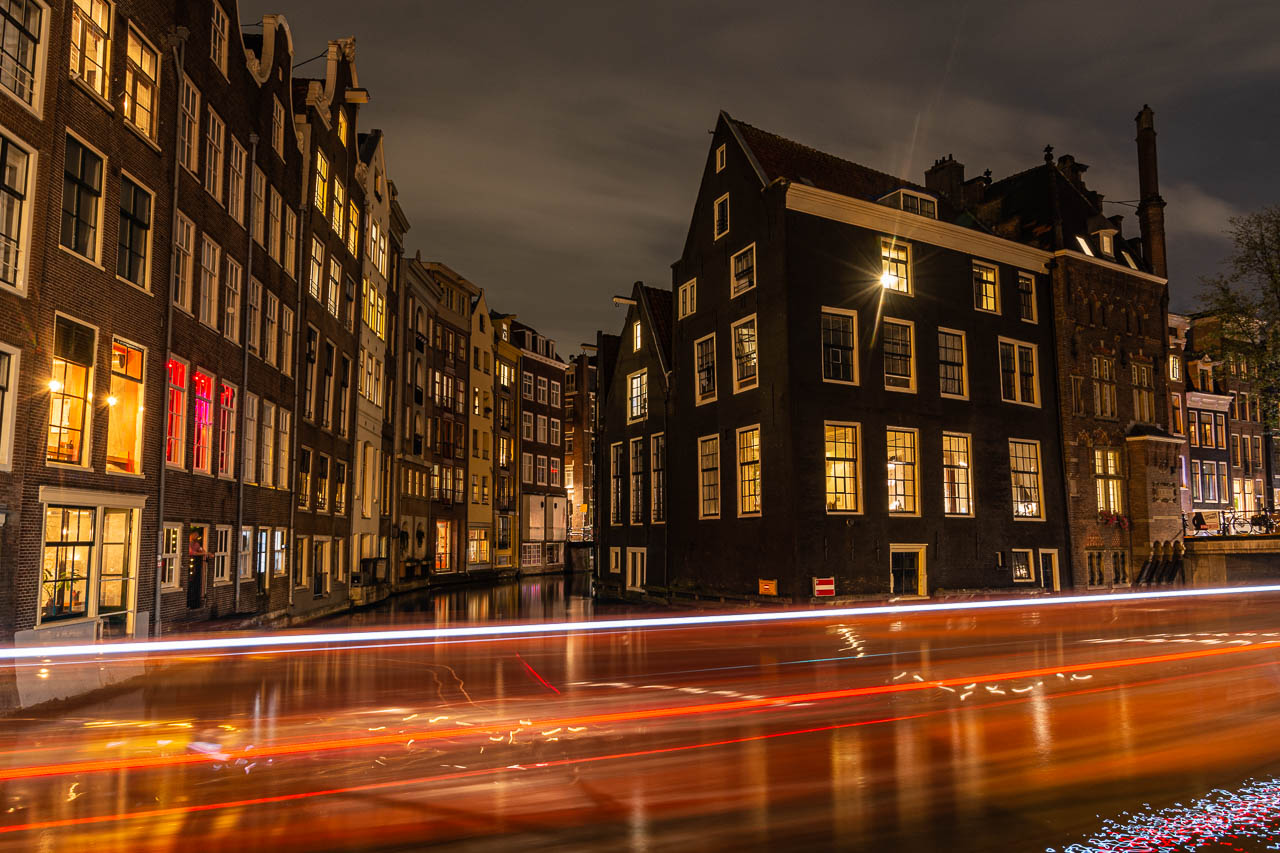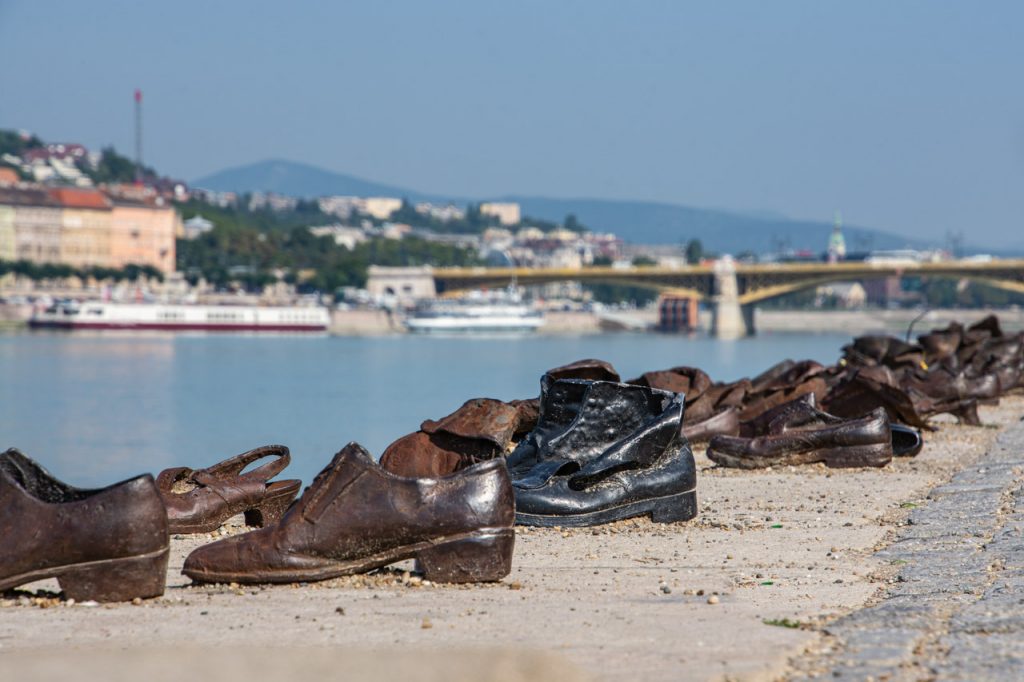What better way to capture a city than through a photography tour or workshop with a local? That’s just what I did when I signed up for two photography tours…
What better way to capture a city than through a photography tour or workshop with a local? That’s just what I did when I signed up for two photography tours in Amsterdam with Amsterdam Photo Safari – the 6-hour walking night photography tour (5.30pm to 11.30pm) and the 5-hour walking day photography tour (11.00am to 4.00pm).
Ruud was my guide and tutor on both photography tours. Amsterdam is his home. I had Ruud to myself for both tours. This was simply luck of the draw as I had not booked private tours. As we walked around Amsterdam’s districts, he exposed this amazing city’s personality; opening up its beating heart and its multi-facetted soul. Ruud took me to places I would never have got to as a traveller. His knowledgeable stories brought Amsterdam to life for me. According to Ruud, “Every photo has a story and to every story there is a photo”. Not only did I feel I improved my photography skills from the guided tuition of a professional photographer who was an excellent teacher, but I discovered Amsterdam from a born storyteller. I found my time with Rudd increased my consciousness of my surroundings. Particularly in terms of what to photograph; what will make an interesting photo; and what will make a photo pop. Thank you Ruud.
Amsterdam Photo Safari cater for all skill levels. I describe myself as an amateur photographer with (now) intermediate skills. I firmly believe that no one is ever too skilled to learn new things. Ruud gave me the confidence to use manual focus (I have a DSLR camera); showing how it better captures a subject that is, for example, reflected in a window or puddle of water. He provided positive and constructive feedback. At no time was I made to feel inadequate.
Ruud’s focus was on me, my learning, my camera, my photography. I believe this was not simply because I was the only participant. Even had there been other participants, the focus still would have been ‘individual’. This was important for me as I was extremely annoyed (to say the least) on one photography holiday a number of years ago where the photography tutor was more interested in the photographs he could capture for himself than those of his paying guests.
Ruud was very keen on shallow depth of field; recommending I set the camera’s f-stop to f/3.5 (the lowest my camera will go). For those non-photographers, shallow depth of field is the immediate foreground in focus, for example a box of flowers or a bicycle (plenty of those in Amsterdam), and the background out of focus (blurred). My passion is travel photography and I doubted such shallow depth of field would suit my purposes. Ruud’s argument was that even though the background is blurred, it is still recognisable and produces a more creative photo. See the photos below for a visual explanation of what I am referring to. While I went along with Rudd, I thought I would never use such a shallow depth of field with my travel photography. I am also someone who wants everything in the photo in focus. So, to find myself using f/3.5 on my further travels through Europe, I surprised myself and silently thanked Ruud. I now have some pretty good, creative photos to add to my memories of the places I have been.
The sign of a good photography tutor is one who can work their way around any camera brand, no matter how unfamiliar they might be with different brands. Ruud’s camera of choice is a Sony, while mine is a Nikon. Rudd admitted he was not overly familiar with Nikons. However, I would not have picked up on this without him telling me. The only hint came during the night photography tour. I had my tripod (these can be hired from Amsterdam Photo Safari at a minimal cost) but had left my remote shutter release back in my hotel room (clever!). I couldn’t remember how to set the in-camera timer. Ruud wasn’t fazed by this. After a quick, unfruitful play with my camera’s dials, out came his mobile phone and an internet search quickly told us where the timer was. No shooting time or opportunities lost.
Given that I live in Australia, all my communications with Amsterdam Photo Safari was via email. Booking with Amsterdam Photo Safari was made so easy thanks to the prompt and detailed responses to my email queries. Payment was made through PayPal (no account required). I even managed to negotiate a discount with Amsterdam Photo Safari for booking two photography tours with them. Once booked, communication from Amsterdam Photo Safari did not cease as they kept me informed with who would be my photography tutor, the meeting place, time etc. Thanks Barry.
Barry went above and beyond, suggesting (unrelated to Amsterdam Photo Safari) places near Amsterdam worth visiting; one of which I added to my itinerary. I was not disappointed.
Comfortable walking shoes are essential. Even though we stopped for coffee breaks, to have the stamina to keep going was crucial. I have to admit, by 3.30pm on the day photography tour I was ready to sit down and not get up again.
I thoroughly enjoyed the night and day photography tours with Amsterdam Photo Safari. I got to discover Amsterdam from a local and learnt so much. My knowledge and understanding of composition and perspective and how to look for and achieve these, were significantly enhanced. But for me, I learnt the most on the night photography tour. Learning how to set up and use long exposure (an area of photography I was not familiar with – as evidenced by my inability to find the timer on my camera) has opened up a whole new genre of photography for me. The canal boats made an excellent subject for long exposure; with their lights making colourful trails across the photo.

A canal boat passing in front of houses on a canal in Amsterdam becomes a transparent, colourful trail of lights through long exposure
I highly recommend Amsterdam Photo Safari.
Note: Flexibility around Amsterdam Photo Safari’s tour hours was not a hassle. I needed to end the night photography tour earlier than designated as I had to ensure I did not miss the last tram back to my hotel. Additional time was simply added to my day photography tour the next day (hence my flagging energy?). Had I not been taking another photography tour the next day, I am convinced Amsterdam Photo Safari would have suggested something appropriate and mutually acceptable in the way of compensation.
If you like this post, PIN it for keeps
Disclaimer: This post contains no affiliate links. All views and opinions are my own and non-sponsored. All photos are my own and remain a copyright of Joanna Rath.
























